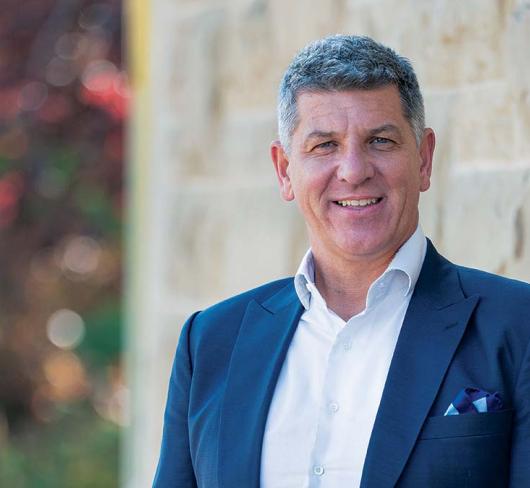
Toys as Tools: Using E-Games for Learning
My daughters were supposed to be doing their homework, but I heard too much giggling not to be suspicious. Homework is not supposed to be giggly. Then, from down the hallway, I heard snippets of the following conversation: “I used fences for teeth. Come see how it looks” … “Hold on a second. I’m in the long intestine. I’ll be right there”
I was completely baffled. “Are you two playing video games or are you doing your homework?” I asked through the bedroom door. There was a long pause, and then they replied in sing-song voices, “Yyeesss!”
My daughters were playing the popular video game Minecraft. Or perhaps I should say they were working Minecraft. Actually, it’s hard to know what to say because we don’t have a word that describes working-by-playing. In any event, they were using Minecraft to learn. Using video games to learn – does that surprise you? You may think that video games and education are natural enemies, but video games have been used as educational tools for many decades.
Launched in 1967, Logo programming was one of the first education-purposed programs. Less of a “game” and more of a programming language, students used commands to draw with a turtle icon. (True nerd fact: I participated in a Logo competition in 1988. My partner and I placed second with a drawing of sailboat.) Where in the World Is Carmen Sandiego (1985) broke all expectations with its interactive geography-based scavenger hunt. It taught us that any topic could be formatted into a level-based, interactive game play and be engaging. One of the most successful literacy programs, Reader Rabbit, started creating programming in 1986 and is now teaching a second generation of children literacy skills!
Like these early games, most education software is designed for a specific purpose. The player follows the story of the game, achieves objectives, and moves toward a conclusion. The player is a passive participant who may have options as to how the game is played, but the purpose of the play, the nature of the game, and the specific objectives are left in the hands of the programmer.
Alternatively, active-play games pass the power to produce levels, games, and entire worlds into the happy hands of the player. The player gets to decide what, if any, objectives to achieve and how to achieve them.
The grandfather of active-play games is SimCity (1989). That game taught a generation of children how to allocate resources, manage cities, and deal with revolting pixelated citizens. It also taught game programmers that games don’t have to be winnable, and for some games the formula of open-concept, “sandbox” would work just as well as the typical “You Win!” format.
Minecraft is a wildly popular active-play game that incorporates creative block building. Think of it as virtual LEGO™. It was designed in 2009 and is available for the computer and for mobile devices such as Android and the iPad. According to the game’s developers, the players work together (on multiple devices) to collect resources, build structures, and survive the monsters who attack at night. In Minecraft, the players can switch off the “survival” mode and instead build objects in “creative” mode. In this mode, there is no danger of monsters, and players can build what they like. Feel like building a replica of the CN Tower? Or perhaps you want to dig mines like a mole rat? Spell your name in the sky? Minecraft may be the virtual environment for you!
My daughters used Minecraft to create an entire digestive system for a grade 5 project. Rather than create a poster or a presentation, they made a virtual model. They started at the top and created the gaping mouth and a deep pit for the esophagus. The stomach was as big as a room and the large and small intestines were a labyrinth of tunnels. Finally, the model included the rectum and a giant, water-filled latrine. For her oral presentation, one of my daughters took her class through the digestive system by literally walking them through the esophagus, stomach, and bowels, and finally splashing them down into the giant toilet. Yes, you read that right: to the tremendous joy of her classmates, she virtual-pooped them out at the end of her presentation.
I know what you may be thinking: how can I suggest Minecraft to my colleagues? Won’t I get laughed out of the staff room? Here are two p-words for any cynics: pedagogy and precedent.
- The pedagogy: Universal Design for Learning and differentiated instruction. The use of Universal Design for Learning allows for multiple means of representation, action, and engagement. It means that flexible instruction, methods, and assessments allow all learners to have an equal chance to learn. Differentiated learning matches the content, format, and assessment of learning with the needs of the learner. What does it all mean? In essence, these concepts tell us that students benefit when they can acquire, process, and demonstrate learning in ways that match their needs and preferences.
- The precedent: Minecraft is part of the curriculum for some schools. Minecraft Edu is a partnership of educators from the United States and Finland who use Minecraft in the classroom. They work with game designers to create modifications so Minecraft works more efficiently in a classroom setting. They have over a 1,000 classrooms participating in activities about language, strategy, history, science, and just about everything else under the virtual sun. The Viktor Rydberg school in Stockholm, Sweden made a course on Minecraft mandatory for students. They learn about city planning, computer skills, co-operation, and eco-issues.
For generations, the relationship between educators and video games has been tense. We’ve been much more likely to say, “Put that Gameboy away” than “Okay, class, let’s open our games to level 3.” But it’s time to find peace between video games and formal education. Consider this: none of the students currently attending elementary school know what it was like to live in a world without the Internet. Let that sink in for a moment. Video games and screen-based interfaces are how these students understand, process, and produce their world-views.
My daughters will never forget that the esophagus is the muscular tube that brings munched food down to the stomach. Why? Because they took that trip themselves. And sure, they probably had the most fun sliding down the rectum into the water-park sized toilet, but that doesn’t mean that they didn’t learn. No, the voyage of food through the body is something that is indelibly burned into their memory – intellectually, visually, and experientially. Thanks Minecraft!
Teaching Ideas
Let’s say that you poll your class and find out that some of your students want to try Minecraft for a school project, what could you have them do?
- Students in grade 2 could build a beaver dam that blocks water. imagine slipping under the water and entering the cozy beaver dam.
- Students in grade 4 could build an entire medieval society with a castle, lord’s manor, and serfs’ village. being able to walk through the bailey will help the class imagine the experience of passing through a market square.
Students in grade 7 could design a habitat pathway for the safe crossing of animals over a major highway.
